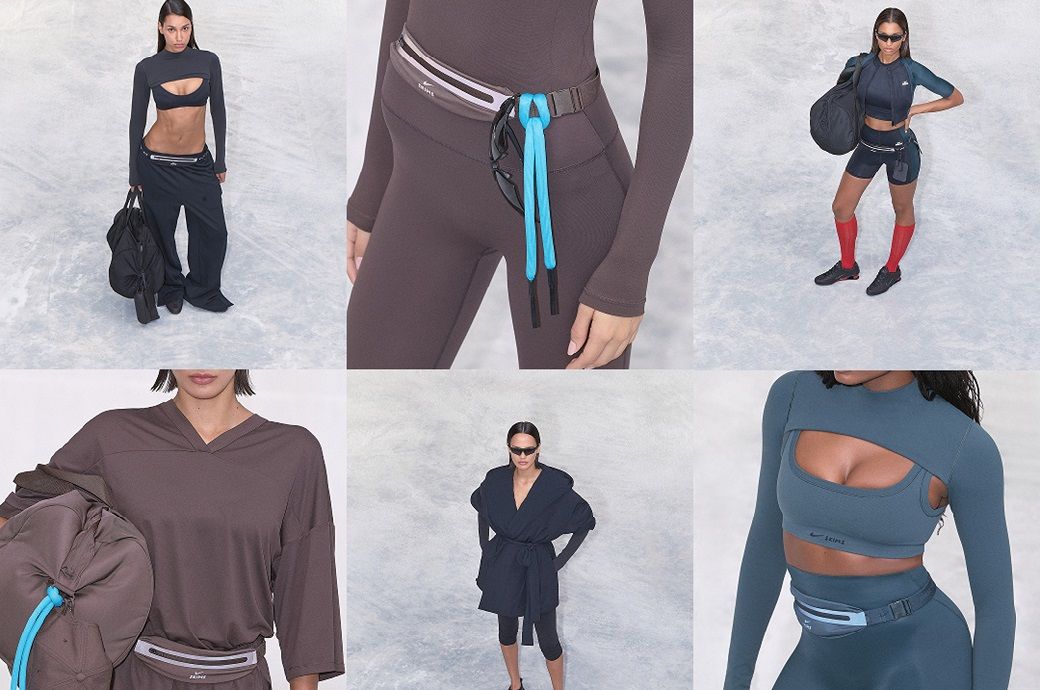Fashion
ICE cotton ends higher on weak dollar, but weekly loss persists

ICE December cotton futures settled at 65.30 cents per pound, up 0.21 cent (0.3 per cent). The March contract, however, dropped 1.7 per cent (110 points), hitting its lowest level since May 30, 2025. March and May contracts closed higher by 14–21 points on the day but were 41–109 points lower on a weekly basis.
ICE cotton futures closed higher supported by a weaker US dollar, which made the fibre cheaper for overseas buyers.
However, prices still posted weekly losses amid uncertainty from the US government shutdown that has stalled USDA reports and pressured markets.
December settled at 65.30 cents/lb, up 0.21 cent, while March dropped 1.7 per cent to its lowest since May 2025.
Daily trading volume on October 3 was 40,408 contracts, compared to 42,492 in the previous session. The average daily volume for the week stood at 49,878 contracts, indicating slightly lower trading interest compared to the weekly average.
The US dollar index retreated, extending its multi-week decline against major currencies. A weaker dollar typically supports dollar-denominated commodities such as cotton by making them cheaper for holders of other currencies. Analysts noted that the weaker dollar makes cotton purchases more affordable.
The US government shutdown began on October 1, 2025, after the federal government ran out of funding. On October 3, the US Senate again failed to pass a temporary funding bill, rejecting both Democratic and Republican proposals. The shutdown has added uncertainty to financial and commodity markets. No USDA reports were released during the shutdown, delaying critical crop and export data. Analysts expect sideways market movement until the shutdown is resolved.
USDA’s weekly crop progress for the week ending September 28, 2025, showed 16 per cent of the US cotton crop harvested, up from 12 per cent the previous week. This compares to 19 per cent at the same time last year and a five-year average of 16 per cent. Crop condition was rated 47 per cent good-to-excellent, unchanged from the previous week but significantly higher than 31 per cent last year.
Short-term price volatility is expected to persist until government funding is restored and key agricultural data is released.
Currently, ICE cotton for December 2025 is trading at 65.30 cents per pound (up 0.21 cent), cash cotton at 62.80 cents (down 0.29 cent), the October 2025 contract at 62.86 cents (up 0.21 cent), the March 2026 contract at 67.19 cents (up 0.15 cent), the May 2026 contract at 68.50 cents (up 0.14 cent) and the July 2026 contract at 69.58 cents (up 0.15 cent).
Fibre2Fashion News Desk (KUL)
Fashion
US brand NikeSKIMS unveils Drop 2 with new styles & accessories

Spanning seven collections; 65 silhouettes; and new accessories such as socks, waist packs and training gloves, the launch builds on NikeSKIMS’ debut drop with new materials, seasonal colorways and styling versatility. The NikeSKIMS system of dress continues to evolve, empowering women to create looks that reflect both their movement needs and personal style, all without compromise.
NikeSKIMS Drop 2 debuts for the new season, expanding its performance-meets-style system with 65 silhouettes and accessories.
The collection introduces new Woven Nylon layers and seasonal colourways across Shine, Matte and Airy ranges.
Its holiday campaign features top speed skaters, celebrating women’s strength, movement and modern femininity.
Core NikeSKIMS material collections — Shine, Matte and Airy — return with new silhouettes and colorways. Shine introduces bold, high-contrast panels in the new Shine Colorblock capsule; Matte continues to offer compression and smoothing with Nike Dri-FIT technology; and Airy delivers breathable, mesh-inspired pieces in both fitted and oversize styles for effortless layering.
Timed for colder weather, the new drop also introduces Woven Nylon: a new category of relaxed third layers, led by the Wrap Coat, that are designed for softness, function and movement. Returning favorites like Weightless Layers, Matte Tricot and Vintage Seamless continue to sculpt and flatter. For the first time, NikeSKIMS expands into accessories and socks, completing the head-to-toe wardrobe system.
The newest designs come to life in a holiday campaign that celebrates women as a collective, spotlighting world-class speed skaters Maame Biney, Kamryn Lute, Kristen Santos-Griswold and Courtney Sarault on a NikeSKIMS branded rink. Featured for their power, precision and grace, these athletes embody the strength of femininity and the edge of sport.
“I want to feel deeply connected to my body and its abilities. I love feeling each burning muscle and every strained breath when I skate — it’s a representation of my effort, determination and resilience,” says Kamryn, who competes at the World Championship level. “Coming into and embracing your own strength, physically and mentally, as a woman is one of the most powerful representations of modern femininity I can think of.”
Captured in striking still photography by Daniel Shea and motion by Madison McKamey, the campaign celebrates movement in all forms, highlighting speed skating and channeling the energy of Milan this winter. Further, a lookbook shot by Hugh Wilson showcases the NikeSKIMS system of dress — a distinct new aesthetic where sport and style are inseparable.
Note: The headline, insights, and image of this press release may have been refined by the Fibre2Fashion staff; the rest of the content remains unchanged.
Fibre2Fashion News Desk (RM)
Fashion
Johnny Coca leaves his role as director of women’s fashion leather goods and accessories at Louis Vuitton

Published
November 19, 2025
Johnny Coca is leaving his role as director of women’s fashion leather goods and accessories at Louis Vuitton. According to FashionNetwork.com, the LVMH-owned French luxury house has parted ways with the designer after more than five and a half years of collaboration.
Coca, one of the industry’s foremost handbag experts, worked within the leather goods team led by Nicolas Ghesquière, artistic director of Louis Vuitton’s women’s collections since 2013.
The Seville-born designer began his career as a leather goods designer at Louis Vuitton in 1996. He also worked at Bally from 2004 to 2010, and at Celine where he served as head of design for leather goods, accessories, footwear, and jewellery from 2010 to 2015. At Mulberry, Coca held the role of creative director for five years before rejoining Vuitton.
Having studied art, architecture, and design in Paris, Coca rose to prominence for his work with Phoebe Philo at Celine, which helped propel the house to the forefront of niche accessories. He also helped to broaden Mulberry’s luxury lifestyle offering, introducing new handbag lines and launching eyewear and trainers.
This article is an automatic translation.
Click here to read the original article.
Copyright © 2025 FashionNetwork.com All rights reserved.
Fashion
India’s Tibarumal Jewels launches lab-grown diamond jewellery brand Elevé Diamonds

Published
November 19, 2025
South Indian fine jewellery brand Tibarumal Jewels has expanded its presence in the lab-grown diamond market with the launch of its new label Elevé Diamonds. The move marks Tibarumal Jewels’ shift from a heritage jewellery brand to expanding into the contemporary, global market.
“Elevé began as a way to serve the community that has always trusted Tibarumal Jewels,” said Elevé Diamonds’ co-founder and managing director Trishank Gupta in a press release. “Over time, it has grown into its own brand, a tribute to the century-old name, tradition, and legacy of Tibarumal’s quality. Having grown up surrounded by jewellery and wanting to create something fresh and meaningful, Elevé became the perfect blend of heritage and modern style, a brand that connects with today’s generation while honouring the past. In simple words, with Elevé, we’re not just continuing the family tradition; we’re elevating it.”
Based in Hyderabad, Elevé Diamonds has debuted with flagship stores in Kokapet, Kompally, and Warangal, and has plans to open at more locations. Next year, the brand will expand internationally with the aim of building a strong global presence.
“Luxury today isn’t about indulgence, it’s about intention,” said the brand’s CEO Prajay Maganlal. “I see it every day in our customers; they want beauty that feels good, not just looks good. At Elevé, we’ve reimagined the experience of the family jeweller, where trust and warmth meet exquisite design and modern craftsmanship. Every collection is thoughtfully created to make our jewellery feel closer, more personal, and effortlessly accessible, an experience that celebrates both brilliance and conscience.”
Elevé Diamonds uses advanced CVD (Chemical Vapor Deposition) technology to create its lab-grown diamonds, which are IGI-certified. The brand targets the accessible luxury segment of the market and counts collections including ‘Nizam’ and ‘Victorian Polki.’
Copyright © 2025 FashionNetwork.com All rights reserved.
-

 Tech1 week ago
Tech1 week agoFrom waste to asset: Turning ethanol production CO₂ into jet fuel
-

 Tech4 days ago
Tech4 days agoNew carbon capture method uses water and pressure to remove CO₂ from emissions at half current costs
-

 Politics5 days ago
Politics5 days agoBritish-Pakistani honoured for transforming UK halal meat industry
-

 Sports4 days ago
Sports4 days agoTexas A&M officer scolds South Carolina wide receiver after touchdown; department speaks out
-

 Business5 days ago
Business5 days agoWhat’s behind Rachel Reeves’s hokey cokey on income tax rises?
-

 Business4 days ago
Business4 days agoThese 9 Common Money Mistakes Are Eating Your Income
-

 Fashion6 days ago
Fashion6 days agoAdidas & Patrick Mahomes expand NIL programme with Texas Tech athletes
-

 Fashion5 days ago
Fashion5 days agoAfter London, Leeds and Newcastle, next stop Glasgow for busy Omnes


















